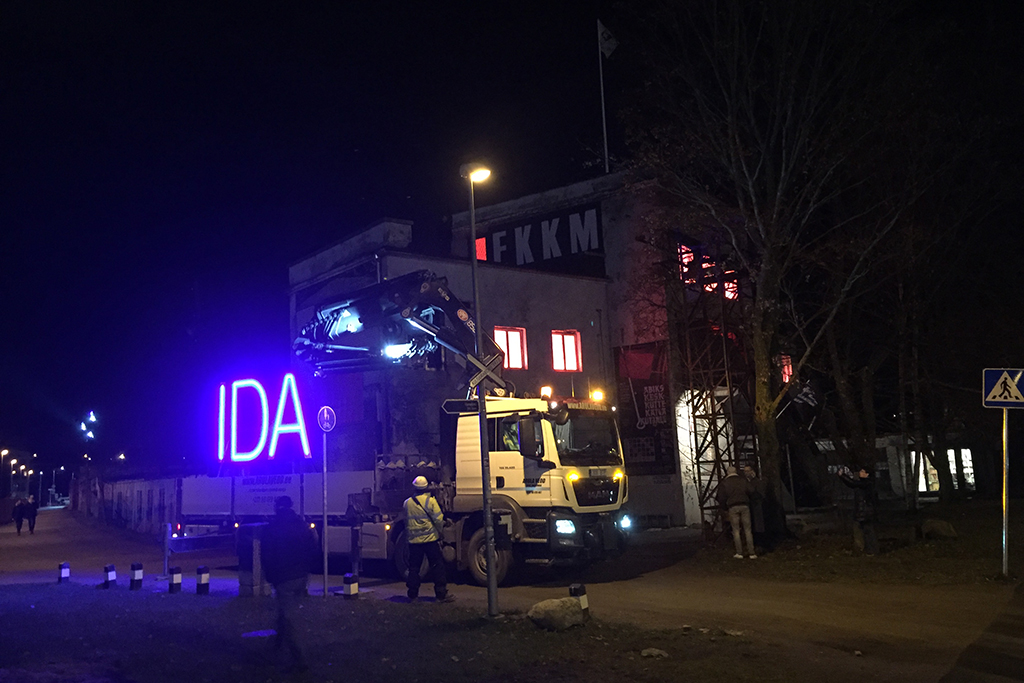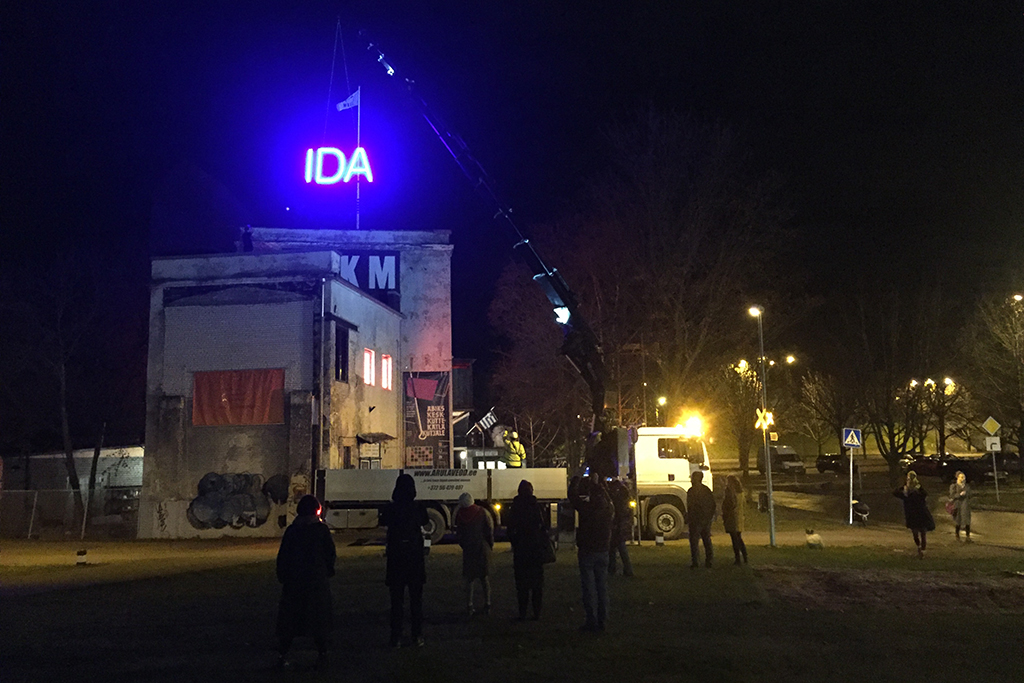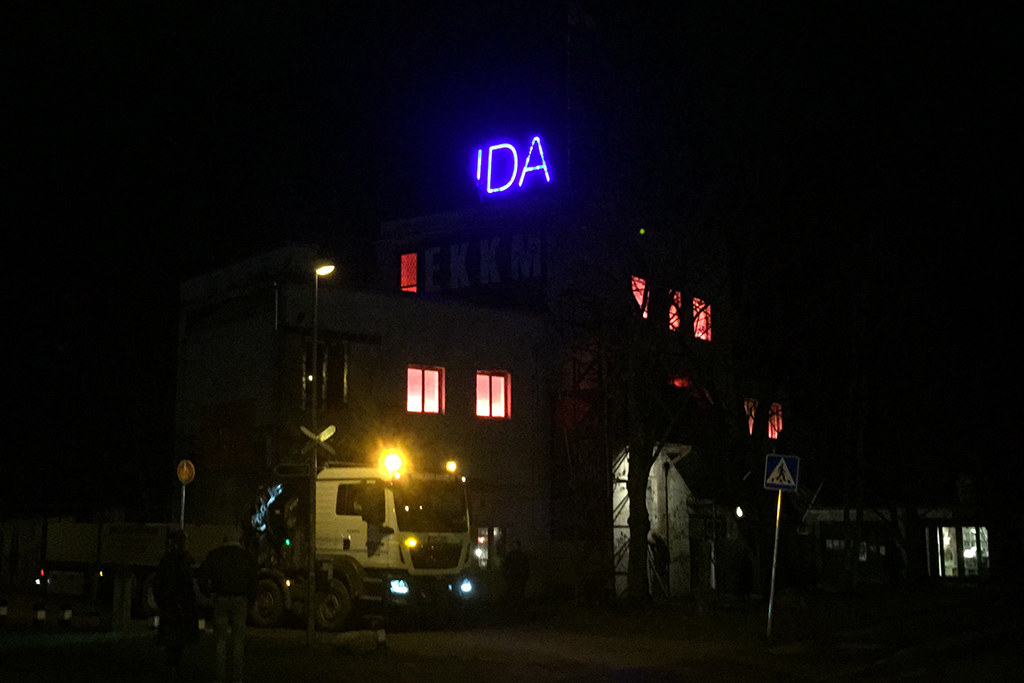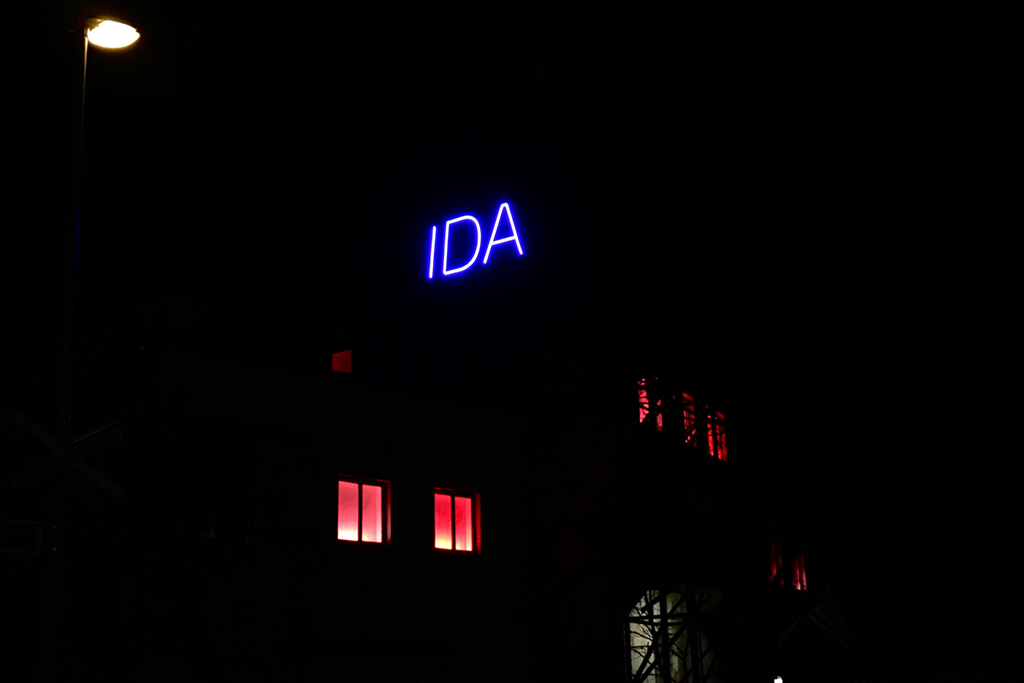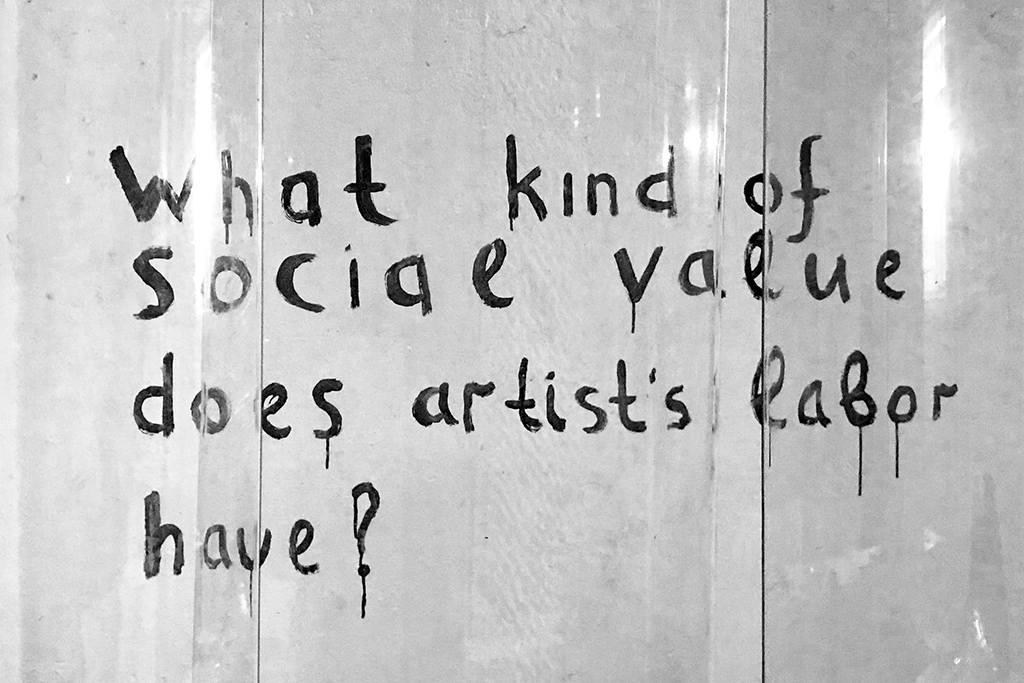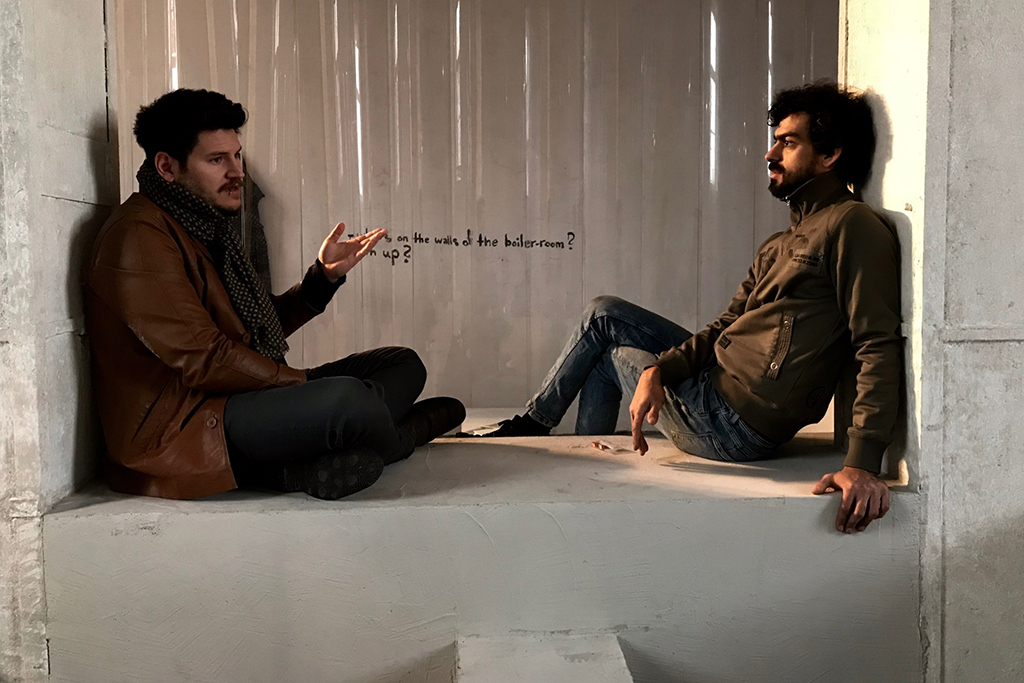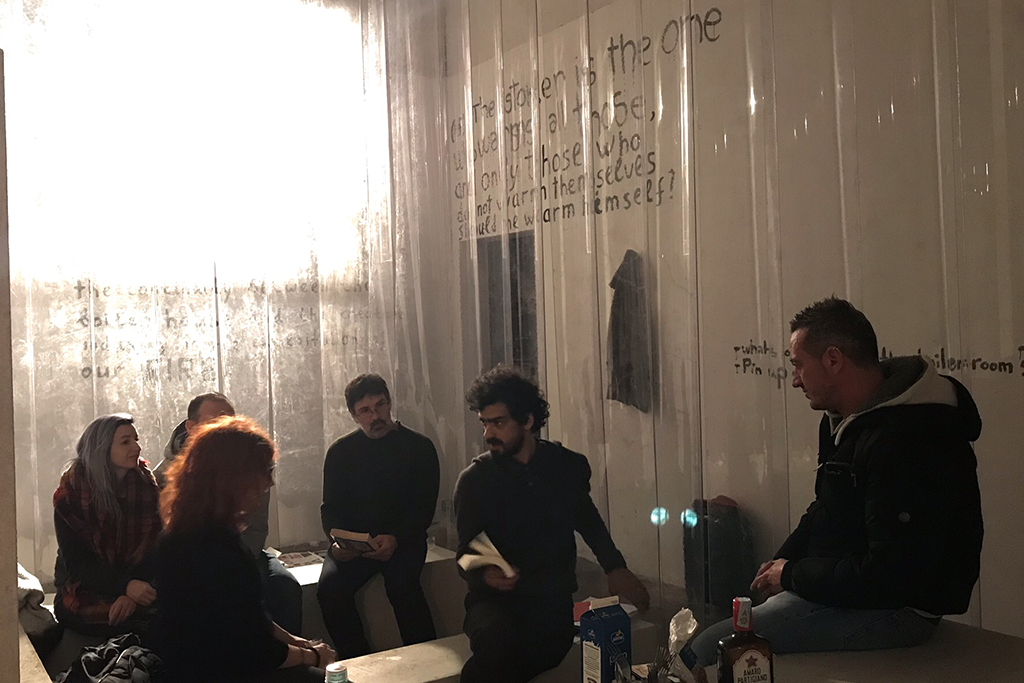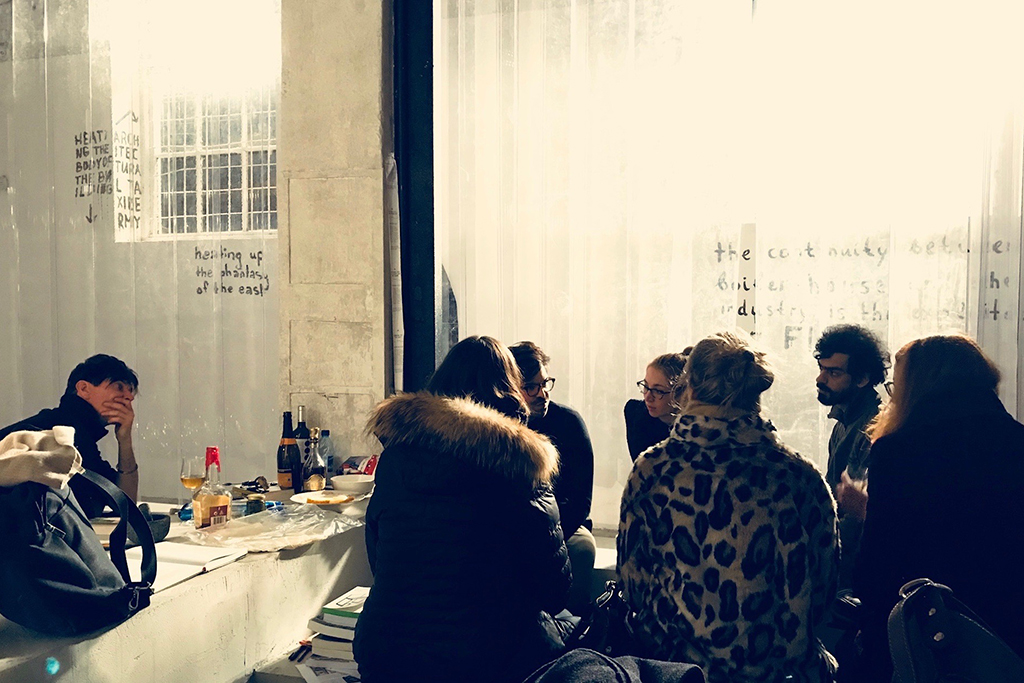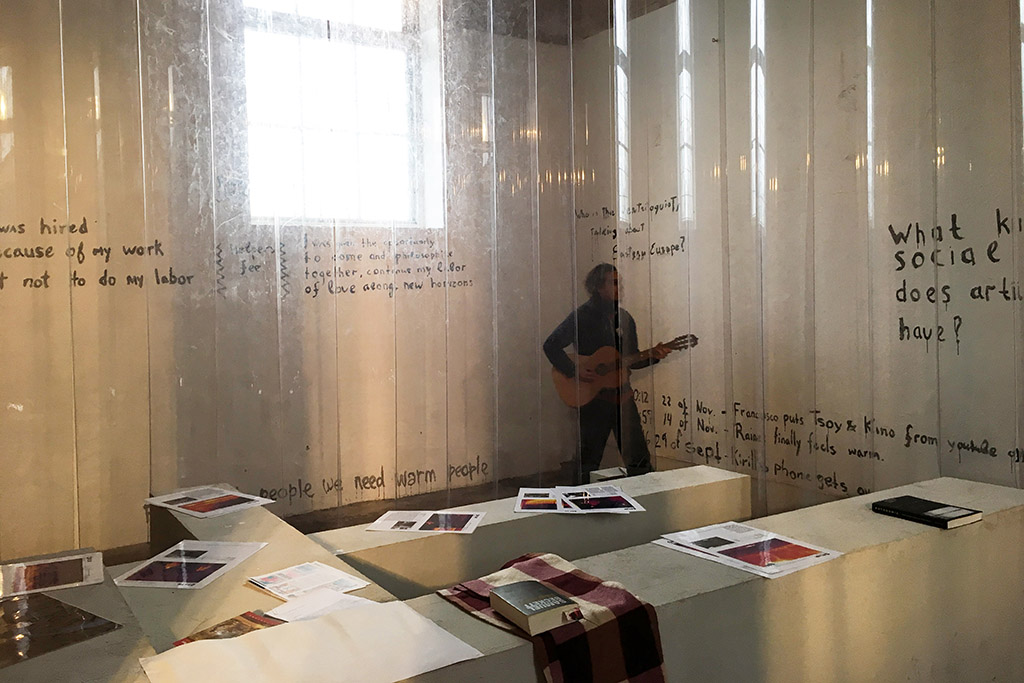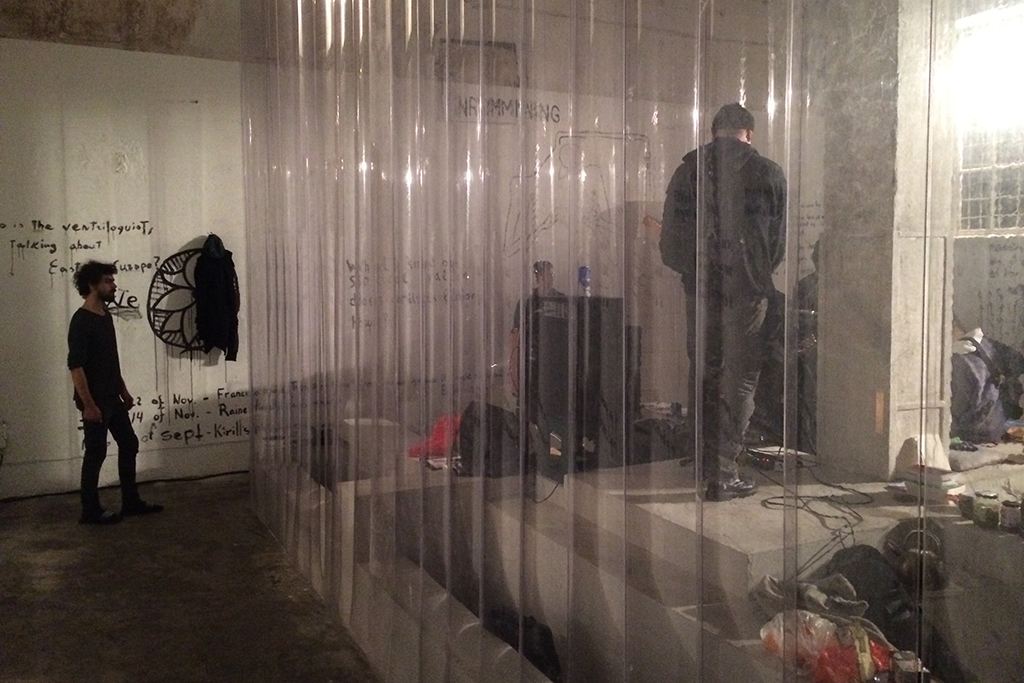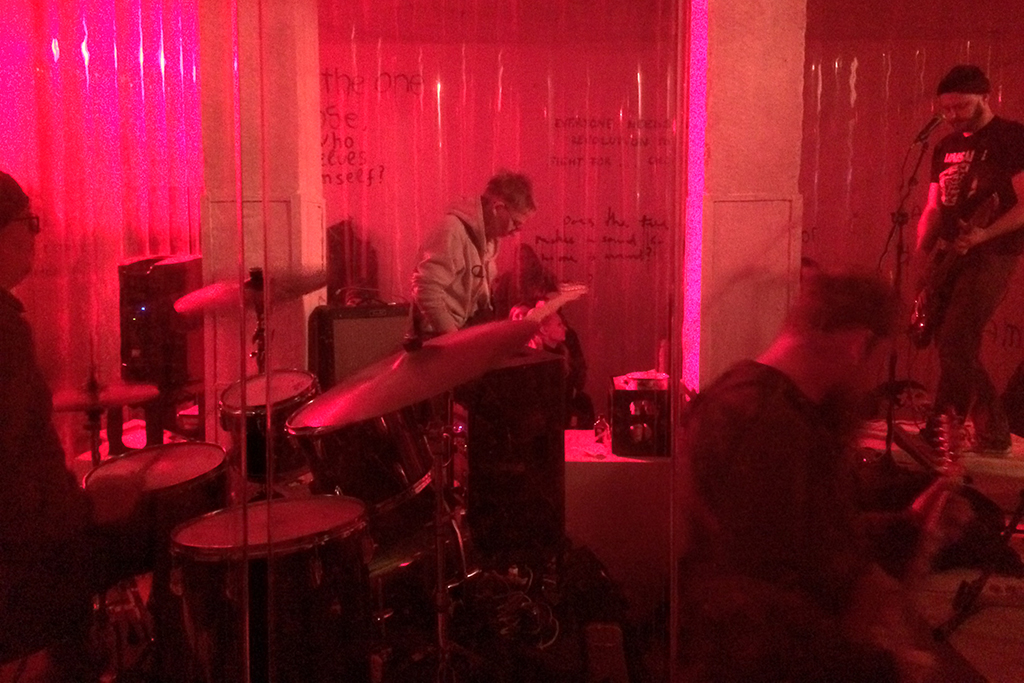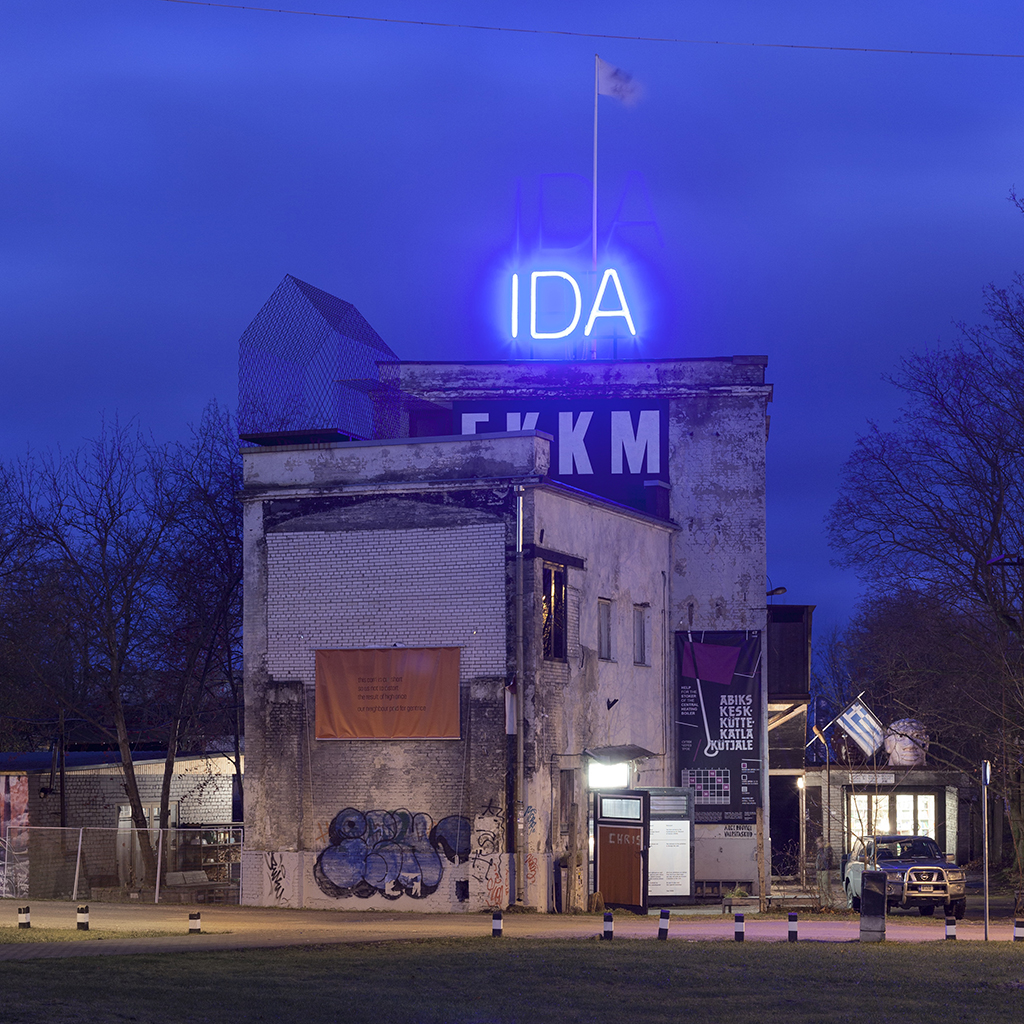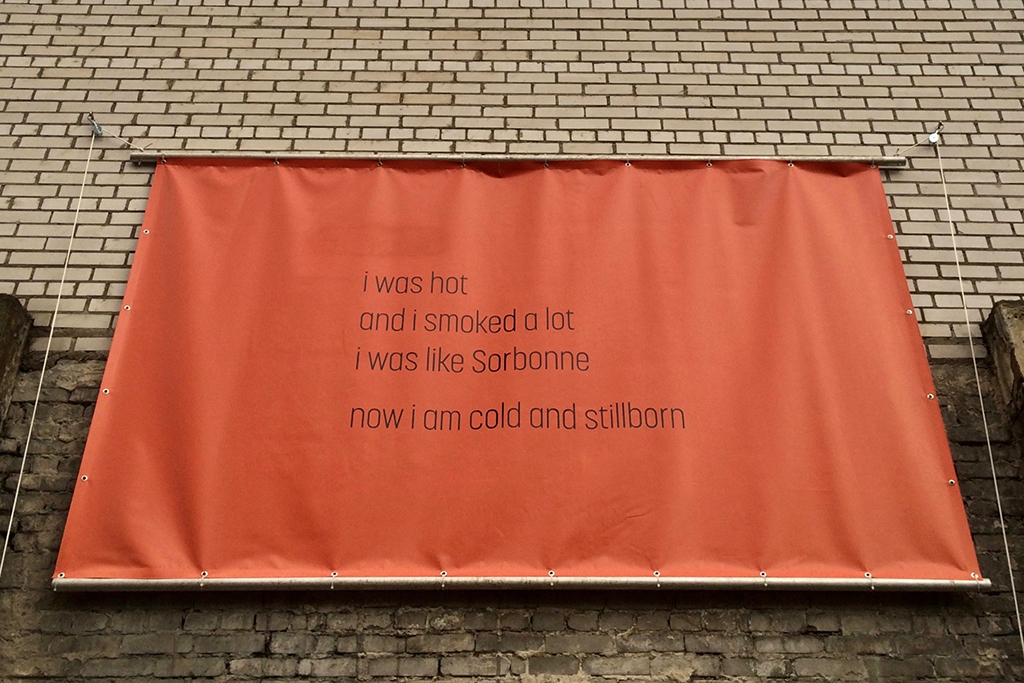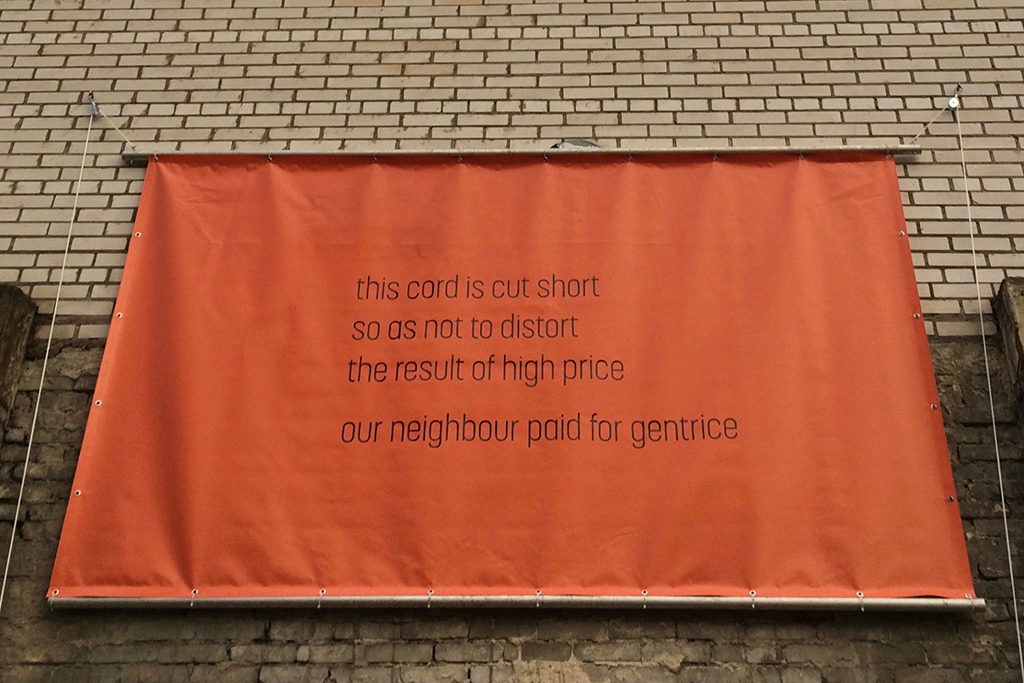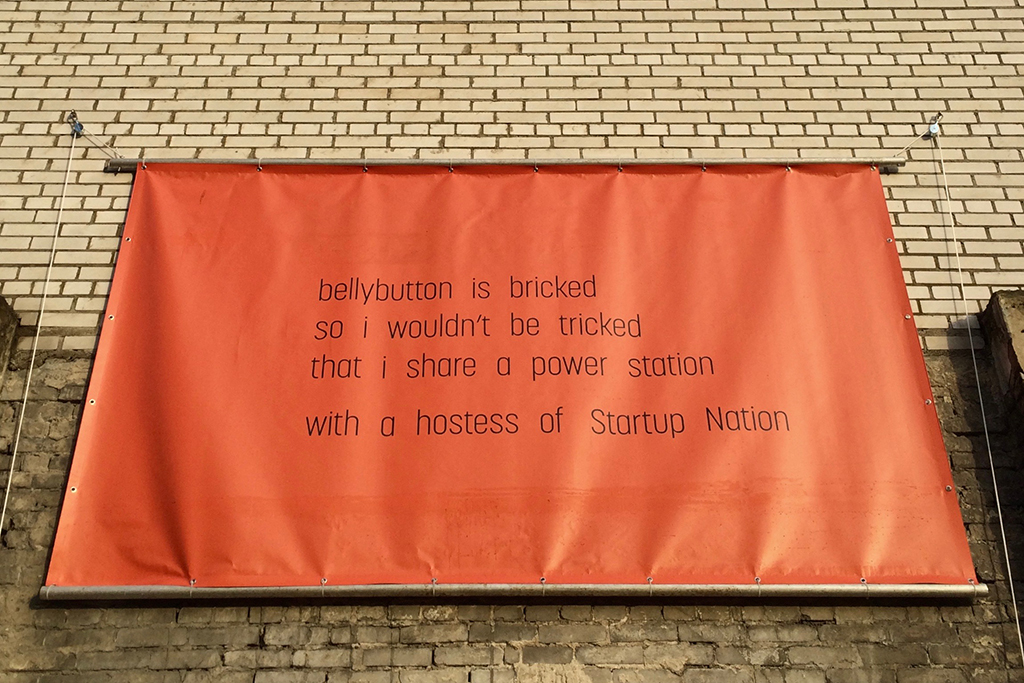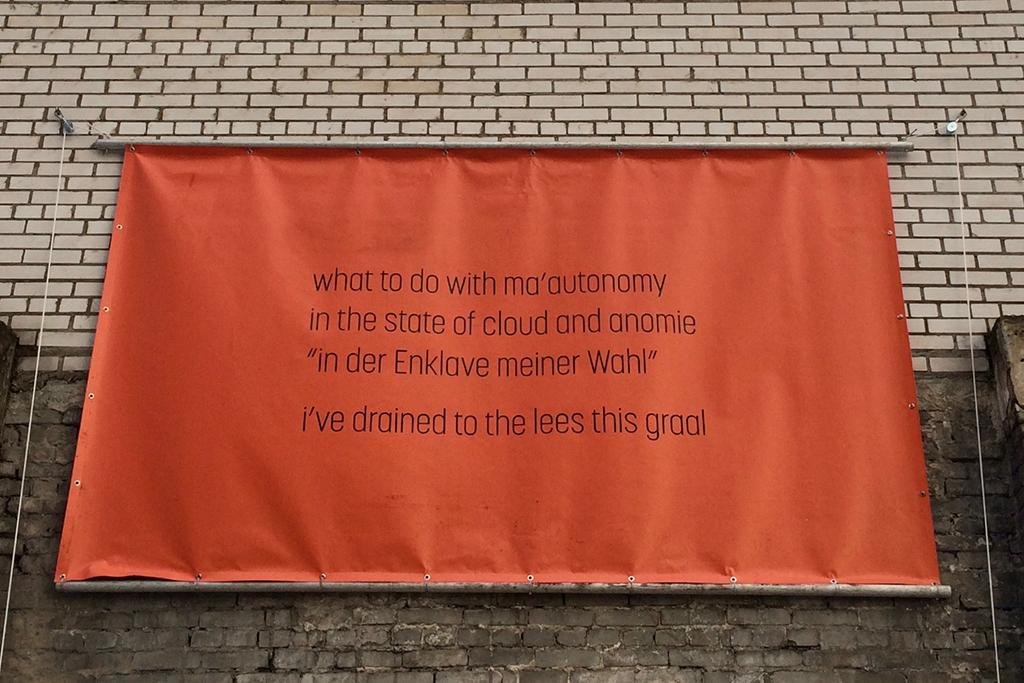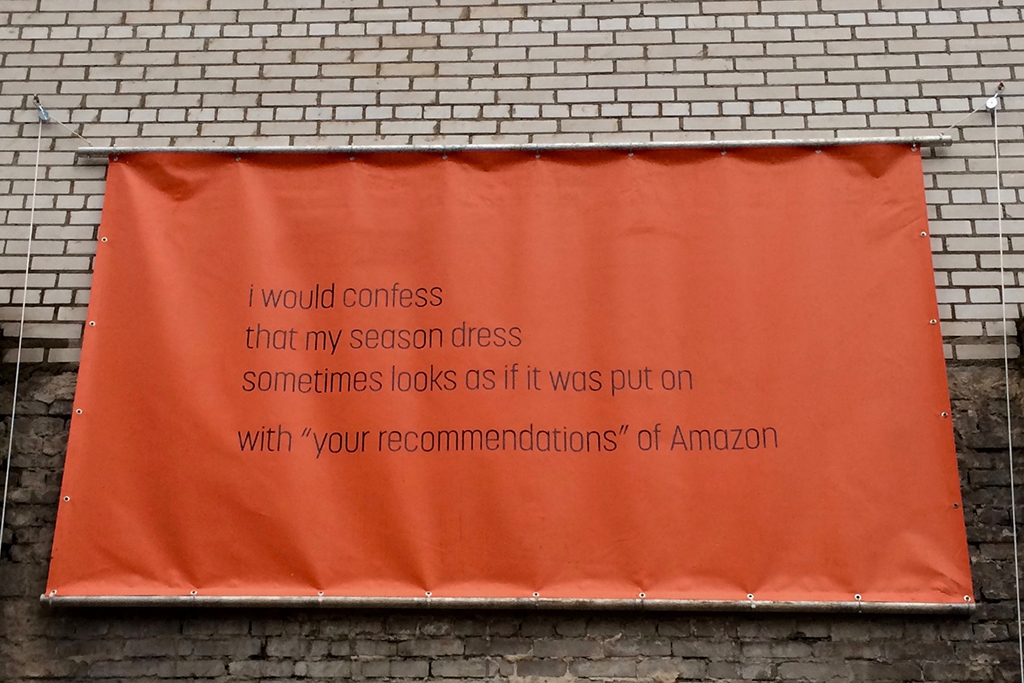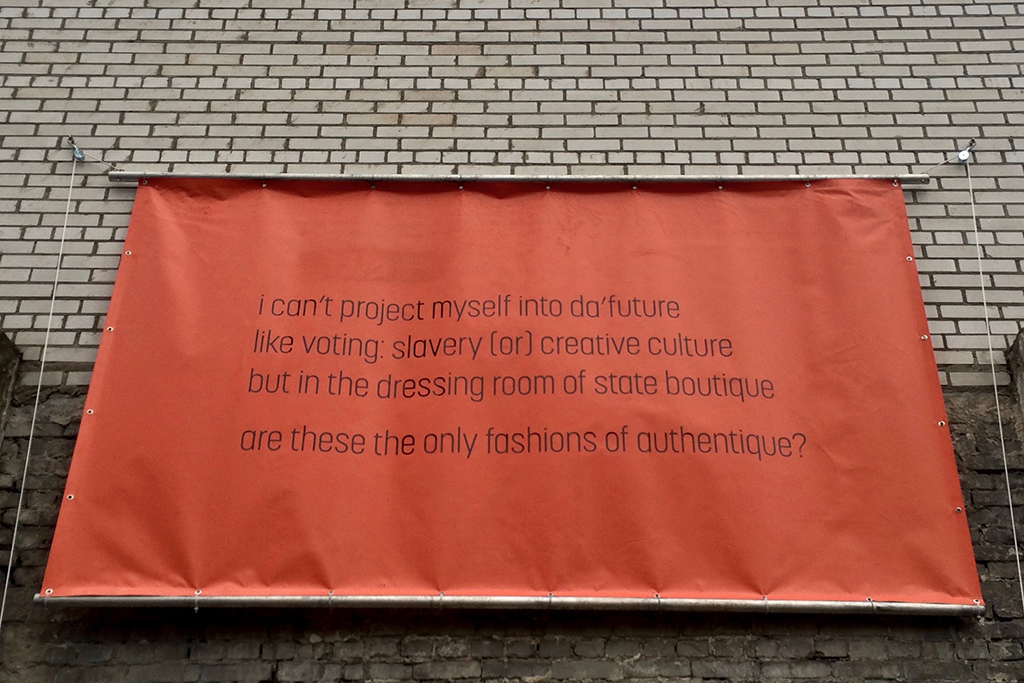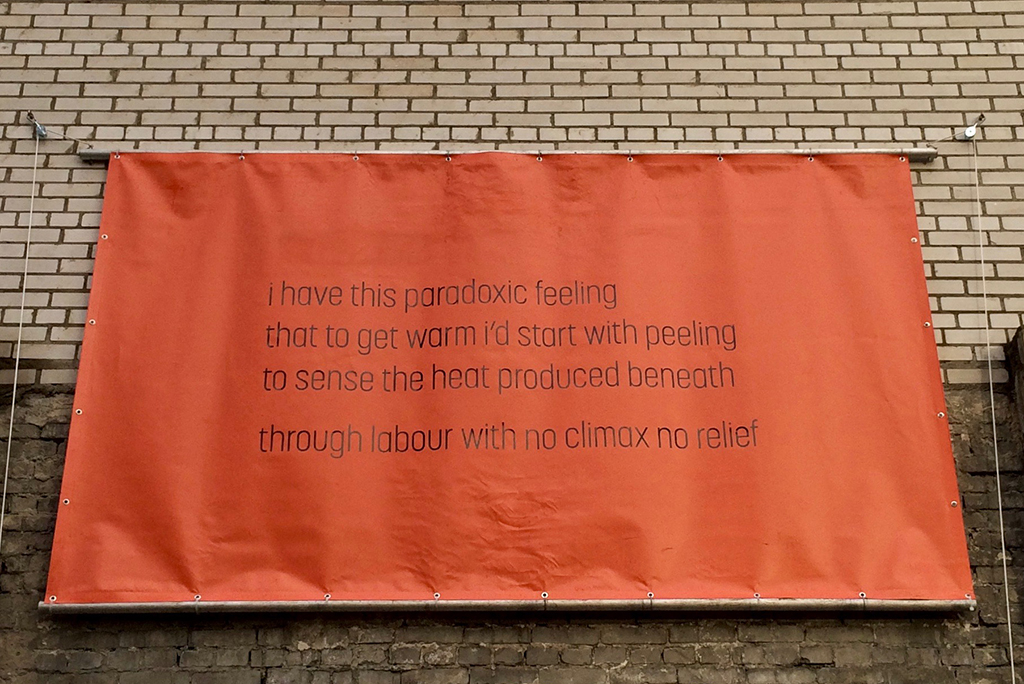Kunstnik
The exhibition is open 24h every fourth day.

This exhibition unfolds at the end of fall when the Contemporary Art Museum of Estonia (EKKM) would habitually be on its way to a thermally-induced off-season — an ironic state for a former power plant. In this transition, co-curated by the climatic and material conditions, EKKM’s body would shrink to the size of the first floor, disjoint from its other limbs. As a (bodily) reaction to these conditions, the artist constructs an autonomous heating system and takes up the job of a stoker.
“Help for the stoker of the central heating boiler” borrows its title from the book found in what would soon become EKKM, when the building was first “re-discovered” in 2006. It was written in the early seventies, and, for at least a few years after its publication, it provided the technical help needed to heat the Tallinn Power Plant — most likely, this was reason the book was found in there, as this building was once part of the Power Plant.
However, now the artist-stoker is in need of a different help than the kind offered by the book: it might be no less practical, but more social than technical. He invites helpers to heat up the space together, with wood and words, following the classic stoker’s shift system of 24h work-days with 3-day breaks in-between. Thus a period of one month is broken into seven separate shifts in which EKKM is kept open and warm, day and night.
Through the figure of the stoker-artist both muffled up and captured by his labour and through the conversations with helpers and visitors, the imaginary history of the late-soviet boiler-room is produced in the space, evoking a very particular type of autonomy linked to these kochegarki (1). “Boiler rooms were literally vnye — inside and outside [2] — the system. Their valves and heat pipes reached like arteries into thousands of apartments in the district, embedding these boiler rooms inside the very entrails of the system, simultaneously providing […] time, space, and intellectual freedom from its constraints. These were temporal, spatial, and thematic zones of vnye par excellence.” (3)
This exhibition is a process of reflection upon such zones of vnye and other forms of autonomy through the practice of living in EKKM as a physical, historic, political, and financial body.
(1) Russian vernacular name for the boiler room
(2) Shorthand for “Vnyenahodimost” that can literally be translated as outside-located, where “location” still holds it from being a pure (and impossible) outside.
(3) A. Yurchak, Everything Was Forever, Until It Was No More. The Last Soviet Generation. Princeton ja Oxford: Princeton University Press, 2013, p. 154.
The exhibition is heated by Kirill Tulin and helpers.
It takes place on the ground floor of EKKM.
Thank you: Adeline Christin, Airi Triisberg, Alexander Skidan, Alla and Igor Tulin, Anna Curcio, Daniele Rossi, David Muoz, Diego Tartari, Edith Poirier, Ekaterina Shcherbakova, Francisco Martínez, Giacomo Donadio, Gigi Roggero, Giorgio Molin, Giovanna Esposito Yussif, Giulia Palladini, Iggy Lond Malmborg, Jimmy, la famiglia Landonio, Marco Meoto, Mihail Berdnikov, Mirco Rota, Olga Jitlina, Pietro Monticelli, Raine Vasquez, Rolye Zapata, Stefano Quitadamo, Tanel Viilup, Valeria Graziano
Supported by: Cultural Endowment of Estonia, Estonian Ministry of Culture, Estonian Artists’ Association, FLIR Systems Estonia, Draka Keila Cables AS, Heliopolis, LED House
Graphic design: Valentin Vare (1961), Kirill Tulin
Dedicated to Giorgio
